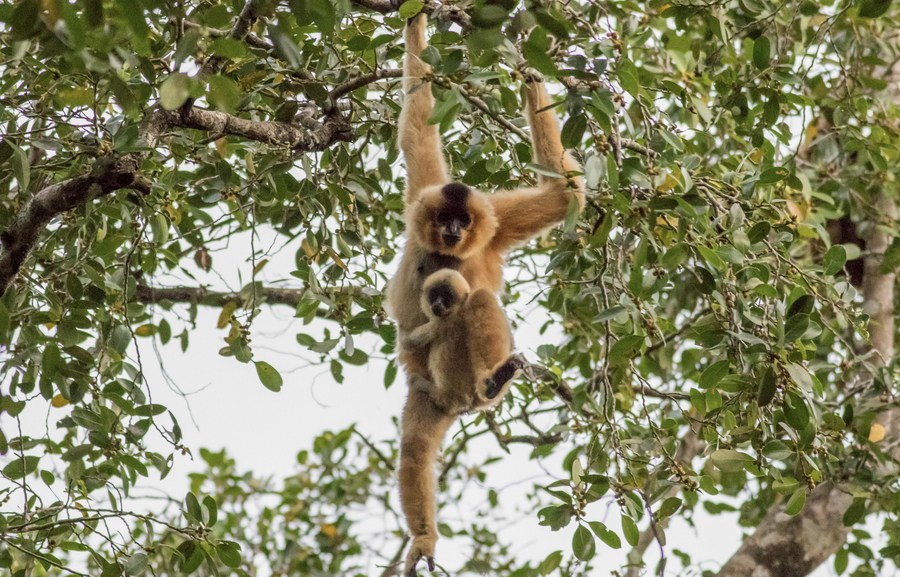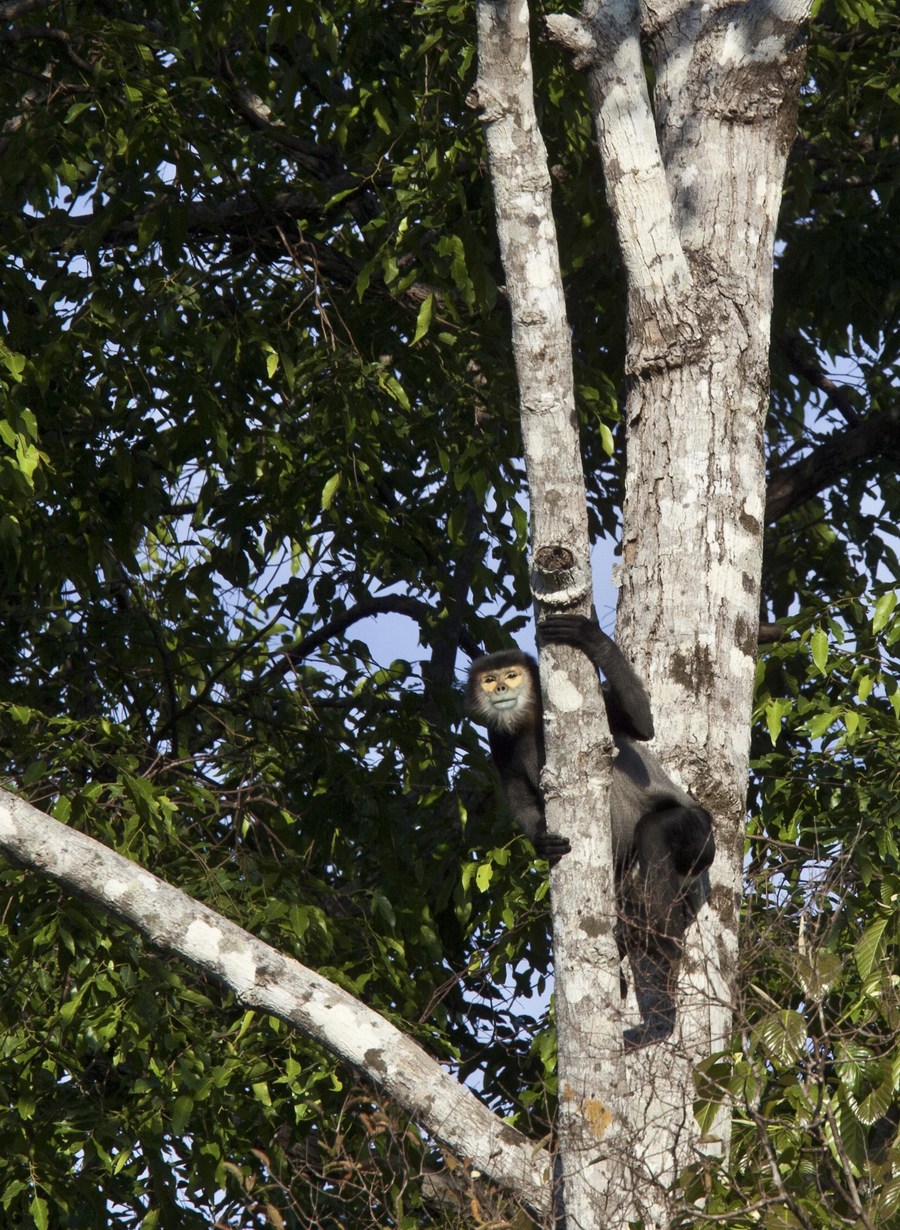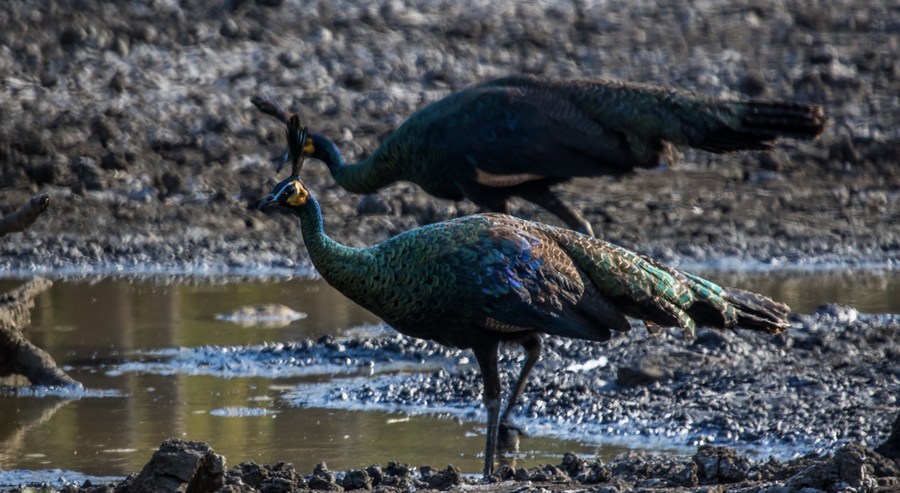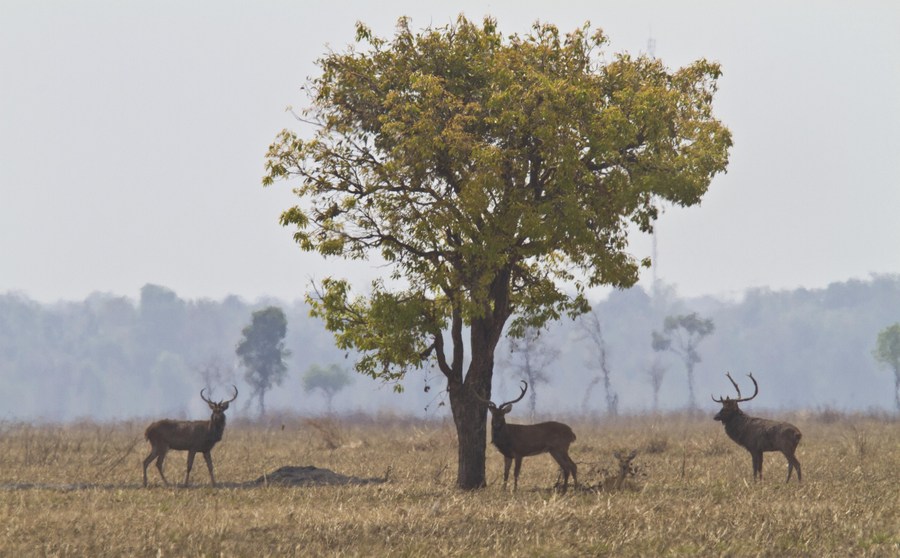
Photo released by the Wildlife Conservation Society (WCS) on Oct. 26, 2020 shows a yellow-cheeked crested gibbon with a baby in Keo Seima Wildlife Sanctuary in eastern Cambodia. (WCS/Handout via Xinhua)
Keo Seima Wildlife Sanctuary (KSWS) in Cambodia is home to globally significant populations of several species, including the world's largest known populations of the endangered yellow-cheeked crested gibbon and critically endangered black-shanked douc langur.
PHNOM PENH, Oct. 27 (Xinhua) -- The Wildlife Conservation Society (WCS) released a report on Monday, showing a 10-year population trend for 13 key wildlife species found in the Keo Seima Wildlife Sanctuary (KSWS), Cambodia's most biodiverse protected area.
Using scientifically robust data collected using a standardized methodology, the report shows that the populations of green peafowl and pig-tailed macaque are increasing, said a WCS's press release.
Populations of black-shanked douc langur, yellow-cheeked crested gibbon, long-tailed macaque, and wild pig are stable, the press release said, adding that the populations of Germain's silvered langur, stump-tailed macaque, and all ungulates except wild pig are undergoing declines.
KSWS holds the highest record number of species of any protected area in Cambodia, and is home to globally significant populations of several species, including the world's largest known populations of the endangered yellow-cheeked crested gibbon and critically endangered black-shanked douc langur, it said.

Photo released by the Wildlife Conservation Society (WCS) on Oct. 26, 2020 shows a black-shanked douc langur in Keo Seima Wildlife Sanctuary in eastern Cambodia. (Eleanor Briggs/WCS/Handout via Xinhua)
"These results highlight the substantial positive impact conservation activities have had on the globally important biodiversity of KSWS, such as maintaining a large, stable population of a critically endangered primate, and an increasing population of endangered green peafowl," said Olly Griffin, WCS data analyst and operations technical advisor.
"They also highlight the scale of the threat to wildlife across Cambodia, with significant declines in all deer and wild cattle species in KSWS," he added.

Photo released by the Wildlife Conservation Society (WCS) on Oct. 26, 2020 shows green peafowls in Keo Seima Wildlife Sanctuary in eastern Cambodia. (Ashish John/WCS/Handout via Xinhua)
Sot Vandeoun, WCS wildlife monitoring team coordinator, said the KSWS biodiversity monitoring team is proud of their work over 10 years in collecting this high quality data, with the teams walking a combined total of 9,460 km during these surveys.
"With both Indigenous Bunong and Khmer team members, we all work hard to protect Cambodia's precious wildlife, and call on other Cambodians to do the same," he said.

Photo released by the Wildlife Conservation Society (WCS) on Oct. 26, 2020 shows Eld's deer in Keo Seima Wildlife Sanctuary in eastern Cambodia. (Eleanor Briggs/WCS/Handout via Xinhua)
KSWS encompasses a total area of 292,690 hectares in eastern Cambodia.
Ministry of Environment secretary of state and spokesman Neth Pheaktra welcomed the report, saying that it demonstrated the significant positive impact on wildlife populations. ■



